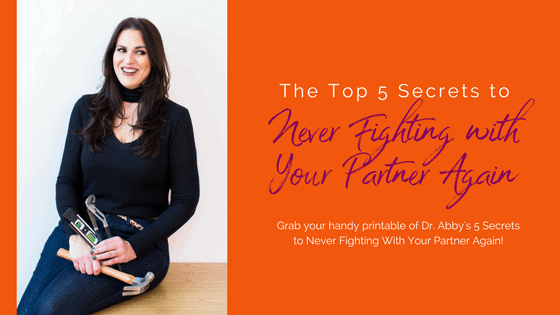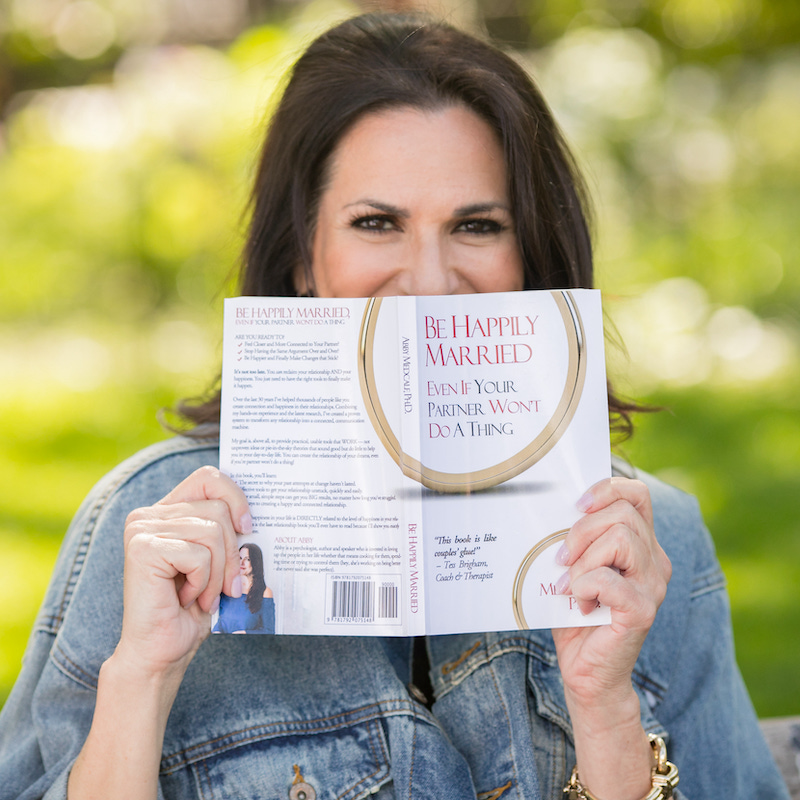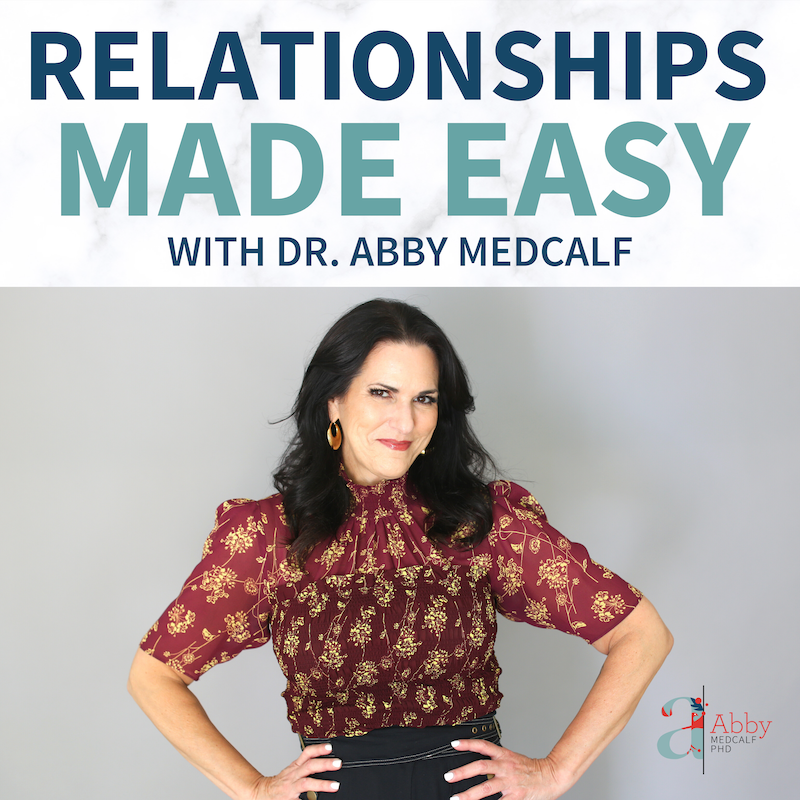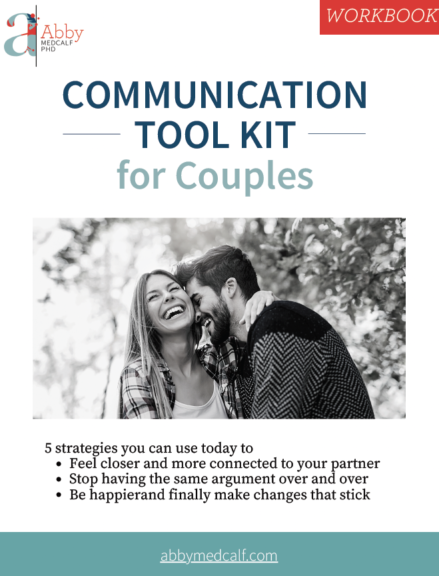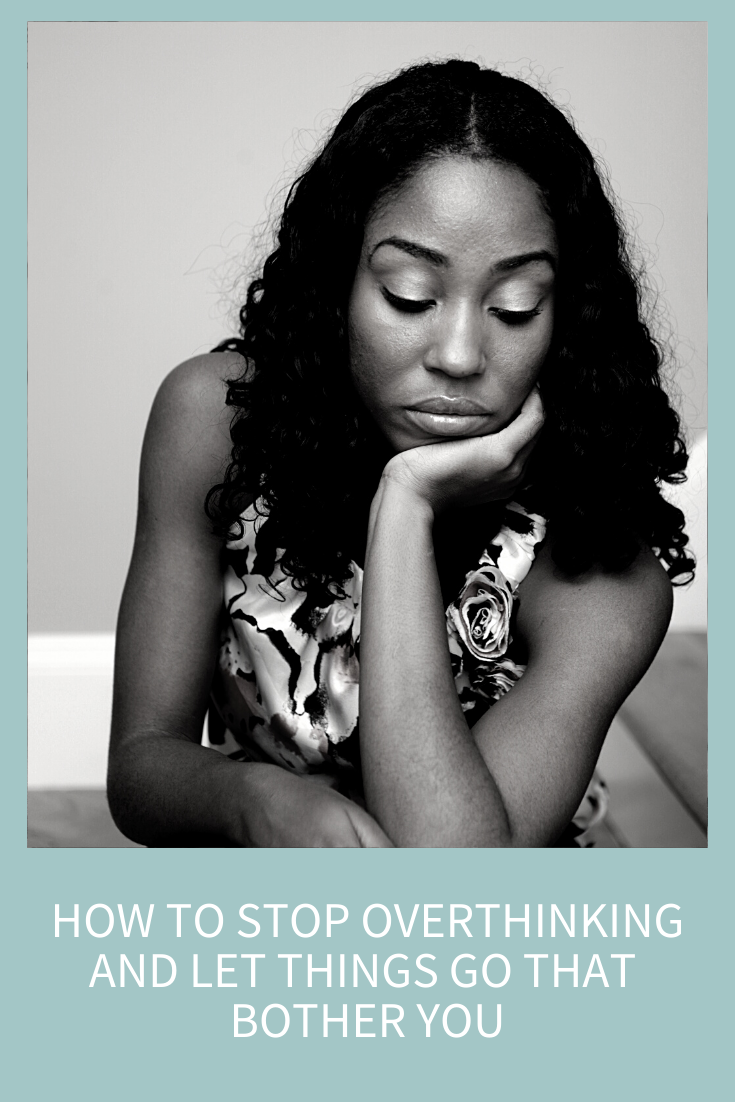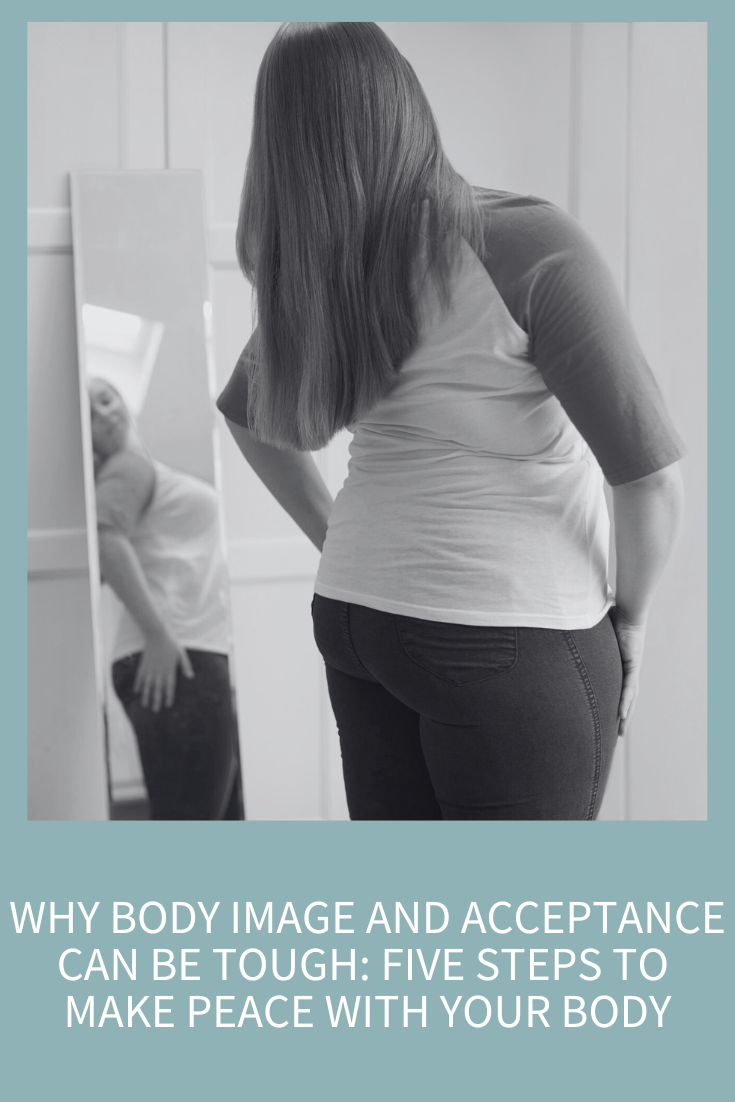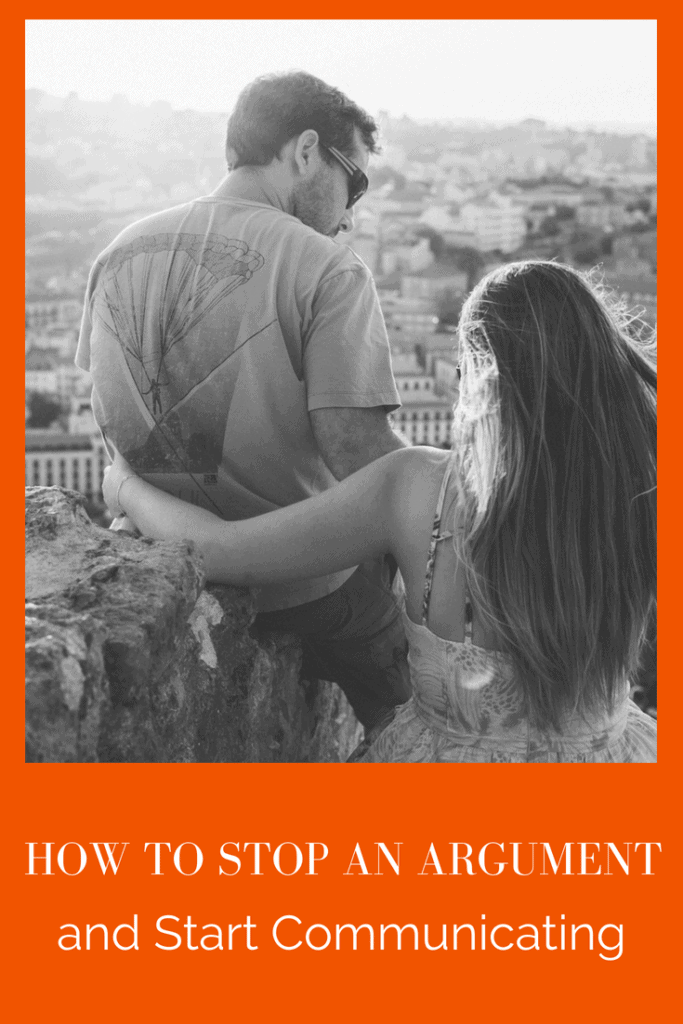
Give me 10 minutes and you’ll have a great new skill to stop an argument and start communicating.
Here’s how disagreements usually go: you say your side, your partner says their side and you go back and forth discussing the “truth” as you see it. All the while, you’re trying to convince your partner that you’re right and they’re wrong while they’re doing the same thing! What happens is that no one is really listening and you end up in the same argument over and over again. Sound familiar? This leads to feelings of helplessness, frustration, hopelessness and even rage.
There’s a great tool you can use to get out of this dead-end cycle so you can start communicating and start feeling understood by your partner.
“The solution is to stop talking about “the facts” and to start talking about your feelings.”
The solution is to stop talking about “the facts” and to start talking about your feelings. The problem with an argument is that everyone becomes a lawyer and you end up focusing on your “proof” and “evidence” and ignore everyone’s feelings. If five people see a car wreck from five different positions, you’re going to get five different accounts of who’s at fault or how the accident happened. Everyone thinks they’re “right” because everyone has a different viewpoint. This is what happens in your personal relationships.
I want you to stop focusing on being right and getting your partner to believe or agree with your side of things. Instead, focus on how you’re feeling. The wonderful thing here is that your feelings can’t be wrong. So, while someone could continue to argue with you about the “facts” of a situation, they can’t tell you that you don’t feel a certain way. It’s harder for the other person to tell you you’re wrong or debate what you’re saying since they’re your feelings.
Let me give you a quick example. I was working with a couple, Cindy and Brian, who had separated for a few months but had recently decided to work on things and had moved back in together. Two days later, Brian invited his parents to come and stay with them for two weeks. Cindy told Brian that she was upset that he’d invited them. He responded angrily saying things like, “I never get to see my parents,” and “They’ve done so much for us, it’s the least we can do.” He immediately focused on the content of what she was saying and not her feelings. He was going on and on with the “facts,” which were all true, by the way. Cindy waited until he said his piece and listened attentively. She then said, “That’s all true, I have no argument with what you’re saying. I’m telling you that I’m upset that you’re inviting them to stay with us since we’re barely back together and I’m still feeling shaky, scared and unsure.”
Cindy did everything right here (she was a great student) because she did three things that will help move you from anger to listening.
First, she empathized before doing anything else. She said, “That’s all true” which showed Brian she was listening and accepting of his side of things.
Second, she stayed away from the content. She didn’t discuss his parents coming and how much they’d done (or not done) for them or Brian’s feeling that he didn’t get to see them often.
Third, instead of answering Brian’s argument points, she simply told him her feelings. This approach not only diffused the argument, but Brian made the decision to wait to have his parents visit. He did that because he could hear her when she spoke to him in this specific way. He felt understood himself and was then open to understanding what Cindy was feeling. This opened the door to new actions and working together, instead of at odds.
When there’s less or no focus on content, and feelings take center stage, there’s not so much someone can argue or debate. What are they going to say, “You’re not allowed to feel that way”?
Even if your partner continues to challenge, remember to keep coming back with how you’re feeling. Use this tool consistently and you’ll start to see a difference in how you feel after a disagreement. Instead of frustration and hopelessness, you’ll find self-confidence and some sanity.
Using the 3-Step Process: Empathize, No Content, Share Feelings sounds simple, but it’s not always easy, as you might imagine. So, to make this really actionable, I want to walk you through an awesome tool I use with my couples to get to feelings and stay away from “the facts.”
It’s called the “I Feel Exercise.” (I know, it’s not a very original name, but it works so lay off). Basically, the I Feel Exercise is a formula for getting it right every time and it goes like this:
“I feel X,
When you Y, and
I need Z.”
In this case, Cindy could have said, “I feel scared and sad, when you invite your parents here so soon after we’ve reconciled, and I need a little more time before we start having visitors.”
Brian could have argued with this (and that often happens) and he might have still had his reaction of, “I never get to see my parents,” and “They’ve done so much for us, it’s the least we can do.” What I would instruct Cindy (and you) to do is to stick to the I Feel Formula and do it again. “I’m just telling you that I feel overwhelmed, nervous and shaky when you invite people here without my permission and I need us to please sit down and discuss this without all the anger.”
It takes two to have an argument.
It takes two to have an argument. If you stick to the I Feel Exercise, your partner will eventually run out of steam because you’re not debating or disputing any facts. You’re just telling them how you feel about a particular situation.
Now, there are a few things to keep in mind with the I Feel Exercise. First, you have to start with a feeling. It’s not, “I feel that you should X.” You need to put a real feeling in there: mad, glad, sad, overwhelmed, frustrated, scared, anxious, etc.
The next thing to keep in mind is that, when you say the “When You Y” part, keep it short and sweet. Do not list the last 20 things your partner did that upset you. Keep it to the situation at hand and say it in as few words as possible. The longer you talk, the more likely you are to lose your audience.
Next, you might not know what you need. You might say, “I feel sad and frustrated when you come home late and don’t call first” and then not be sure what’s next. Maybe you’re tired of asking to be called earlier in the day. Maybe you’re tired of being ignored and just feel hopeless so can’t think of an “and I need” statement. That’s OK, you can skip it. Just stick with the “I feel X, when you Y” and leave it at that.
“It’s not usually your partner’s intent to make you sad and they often want to rectify it if they see that you are.”
Lastly, I want you to get underneath the anger. Anger is a top emotion. If your answer is “I feel angry when you Y” I’d like you to take a moment and see what’s there besides the anger. In my experience, what’s usually there is some type of fear or sadness. Your partner will respond better to your sadness than to your anger which opens the door to better communication. Anger tends to put people on the defensive and they get angry themselves, or it makes them silent and unwilling to engage. When you show your partner your sadness and vulnerability, it generally makes them want to come towards you. It’s not usually your partner’s intent to make you sad and they often want to rectify it if they see that you are. This is where communication happens.
Head over here to listen to the companion 2-Minute Solution and 10-Minute Solution podcasts for this post!
And here’s where you can find my 10 Minute Solution: How to Stop Arguing and Start Communicating video.
